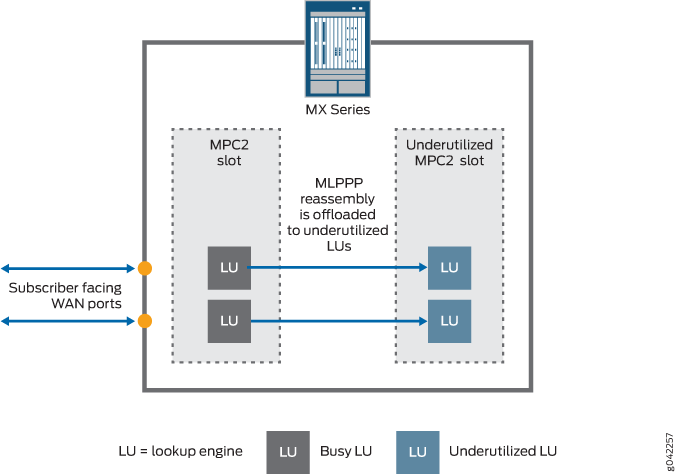MLPPP Bundles and Inline Service Logical Interfaces Overview
Each MLPPP bundle for LNS or PPPoE (terminated and tunneled)
subscribers is represented by an inline service (si) logical interface (IFL).
This topic contains the following sections:
Distribution of Reassembly Processing
L2TP network server (LNS) can sustain a throughput of approximately
67 percent of line rate for 64-byte packets. Additionally, MLPPP reassembly
must be performed on a subset of these L2TP sessions. By introducing
an si interface for the bundle, some of
the MLPPP reassembly processing can be offloaded to another lookup
engine different from the one that is performing the LNS processing.
For example, Figure 1 shows a
typical MX Series containing two access-facing MPC2 slots, with each
slot containing two lookup engines. One or two of the lookup engines
are underutilized within the MPC2 slots. The underutilized lookup
engines are available to host si interfaces
to offload MLPPP reassembly processing.

To minimize fragment reordering, the MLPPP si interface must be on an MPC2 where shaping and queuing is performed
at the bundle.
Aggregation Point for True Multilink PPP
You can map each link of a multilink bundle to a different lookup
engine for LNS processing. Using an si interface
for the bundle guarantees that all fragments belonging to the same
bundle arrive at a single lookup engine for reassembly.
LAC Subscriber Bundle
After a subscriber is tunneled, the bundle is no longer involved in both the control plane and the forwarding path, and both MLPPP bundle IFL and session ID are noted in the graphical user interface.
